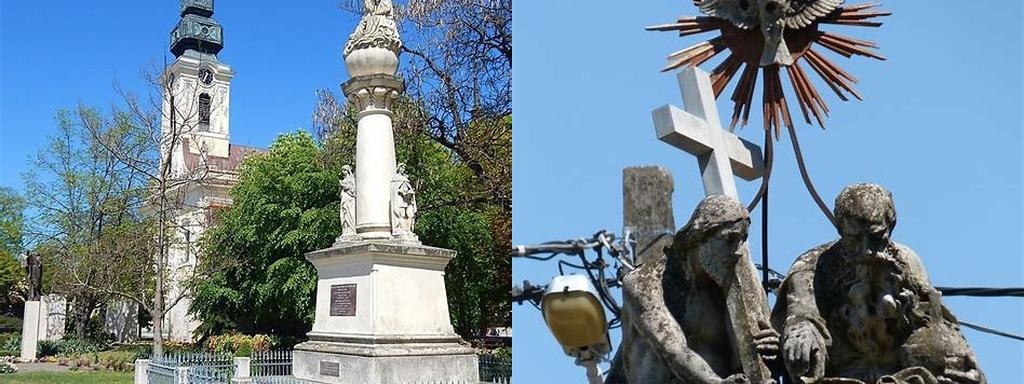
Szentháromság-szoborcsoport sits quietly at one of the most atmospheric spots in Pécs, gathering sunlight, shadows, and decades of stories on Széchenyi Square. While you may have passed by city squares adorned with statues before, the Holy Trinity Statue Group rewards those who take the time to linger and observe. Far from being just a religious relic, this memorable monument weaves together art, faith, and a healthy dose of local legend—an intriguing snapshot of Hungary’s complex past.
The origins of Szentháromság-szoborcsoport go back to a pivotal moment in Pécs’ history. In the early 18th century, this city—like much of Hungary—was emerging from centuries of Turkish occupation and grappling with the scars left by repeated outbreaks of the plague. In 1714, as a gesture of gratitude for the town’s deliverance from the deadly disease, local burghers decided to commission a monument. Crafted by the talented Austrian sculptor Andreas Mayerhoffer, the statue was finally unveiled in 1714 (with some later modifications), making it not only an important religious placeholder but also one of Hungary’s earliest public commemorative sculptures.
Walk up to the intricate statue group and you’re met first by a tall column topped by the shining representation of the Holy Trinity: Father, Son, and Holy Spirit. Look a little lower, though, and the details keep multiplying. Like characters from a Baroque drama, plague-protecting saints cluster around the base: Saint Roch with his signature dog, Saint Sebastian riddled with arrows, and Saint Rosalia wearing a crown of roses. Many locals once believed that praying at the statue could stave off future epidemics—and even today, you’ll find small bouquets or flickers of a votive candle at its foot, keeping centuries-old customs alive.
Despite all the solemn faces and soaring marble, you can’t help but sense an undercurrent of local pride in the way the monument watches over the square. Pécs is a city built on layers—Roman ruins, Ottoman mosques, and Art Nouveau apartments stand side by side—and the Szentháromság-szoborcsoport feels right at home in the middle of this beautifully mismatched ensemble. Just steps away is the striking Gázi Kászim Pasha Mosque and the pastel façades of 19th-century townhouses. During festival times or on lazy weekend afternoons, you might catch a snippet of children’s laughter or a busker’s accordion, all under the silent gaze of the saints.
Over the centuries, the statue has witnessed the square change with the city’s fortunes: imperial parades, freedom marches, bustling marketplaces, and quiet, everyday moments. Restoration efforts have kept the monument mostly true to its original Baroque splendor, but if you look close, you’ll spot the gentle marks of time—all the more reason to pause, appreciate, and maybe snap a photo for your own album of travel memories.
If you’re the kind of traveler who likes to dig beneath the surface, Szentháromság-szoborcsoport offers a rare chance to touch history and imagine life in a very different era—one filled with fears of plague, hope for protection, and artistry used in the service of gratitude. Next time you find yourself in Pécs, let your wanderings lead you to Széchenyi Square. Stand beneath the Holy Trinity, listen to the stories in the stone, and you might just feel a thread connecting you to all those who stood here centuries before.





